Cape Ashizuri – Ashizuri Misaki 足摺岬
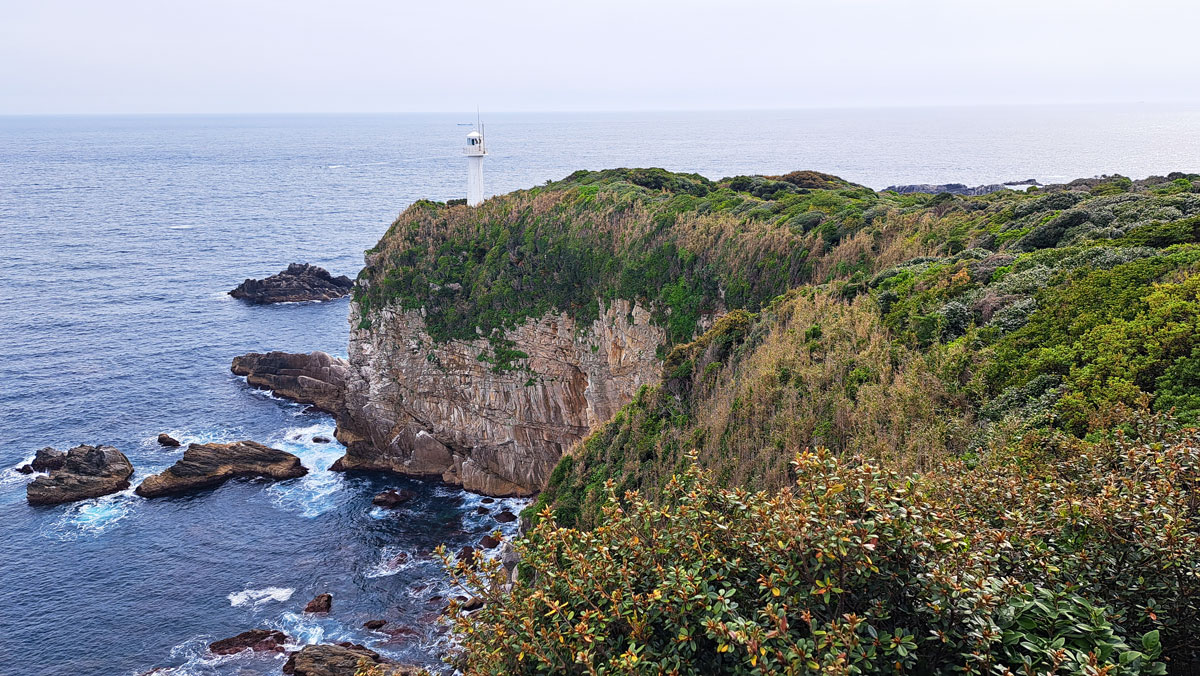
Setting and History
Cape Ashizuri is the southernmost point of Shikoku, renowned for its dramatic cliffs and stunning coastal views. Dominating the landscape is the Cape Ashizuri Lighthouse, one of Japan’s largest and a symbol of the area. A 2-kilometer-long coastal path allows visitors to take in various vantage points and highlights of this rugged region.
The cape is home to Kongofuku-ji Temple, the 38th stop on the historic Shikoku 88 Temple Pilgrimage. This adds cultural and spiritual significance to the area’s natural beauty.
Part of the Ashizuri-Uwakai National Park, Cape Ashizuri encompasses a diverse range of landscapes, from coastal cliffs to mountainous regions. The park is celebrated for its rich biodiversity, including many unique plant species, such as various types of camellias, and a variety of marine life.
Cape Ashizuri also holds historical importance. It is associated with John Mung (Nakahama Manjirō), one of the first Japanese to visit the United States and return to Japan, playing a key role in opening Japan to the West. Near the cape, you will find a statue and a museum dedicated to him.
The region offers a blend of natural beauty, cultural heritage, and outdoor activities, making it a perfect, tranquil destination that will take 3 to 5 days to visit.
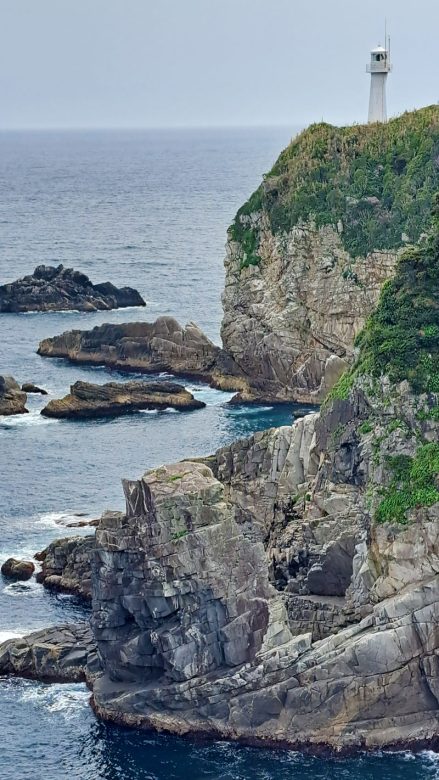
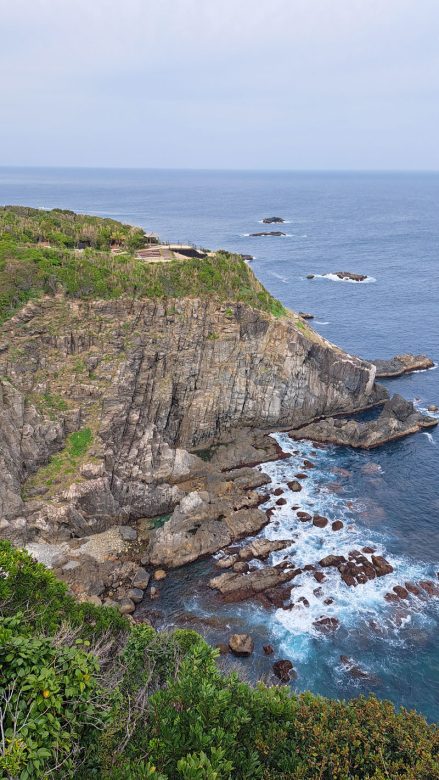
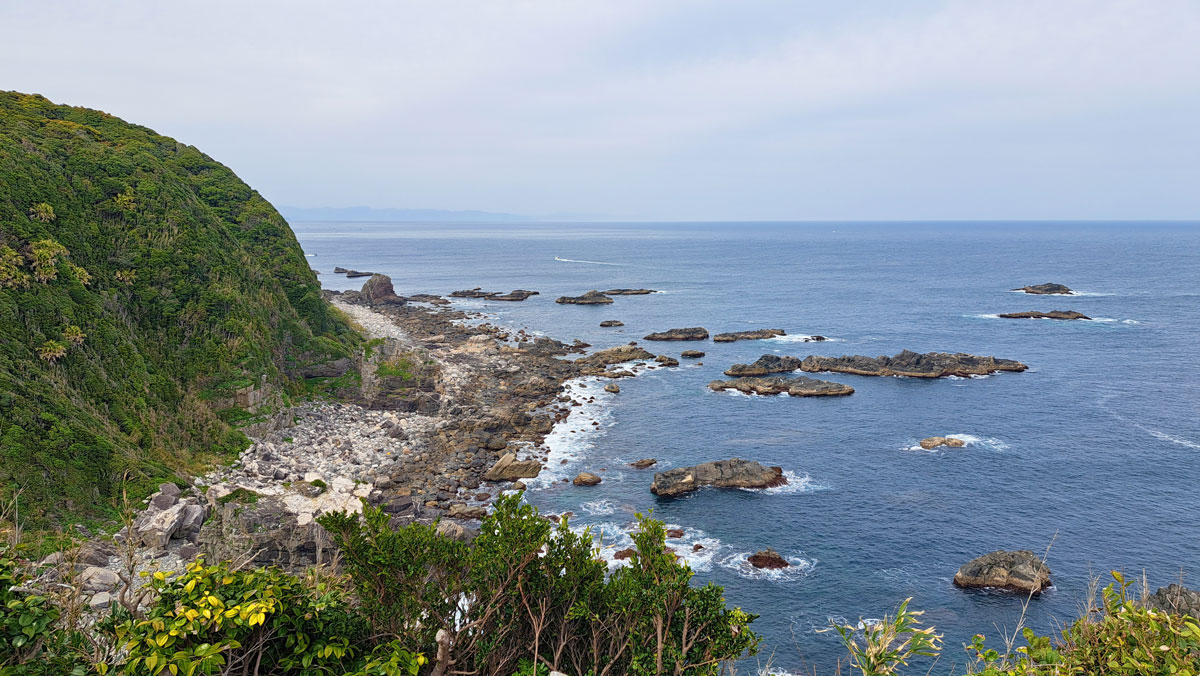
The Walk
We arrived at the cape on foot from our hotel, The Mana Village, enjoying a very pleasant half-hour walk. The path led us past the sea, over cliffs, and through local fishing villages, parks, and beaches. Along the way, we admired the Hakusan Domon Natural Arch granite rock, a 16-meter-high and 17-meter-wide sea cave with a 15-meter-deep arched entrance and continued on the 2 km path of the different vantage points.
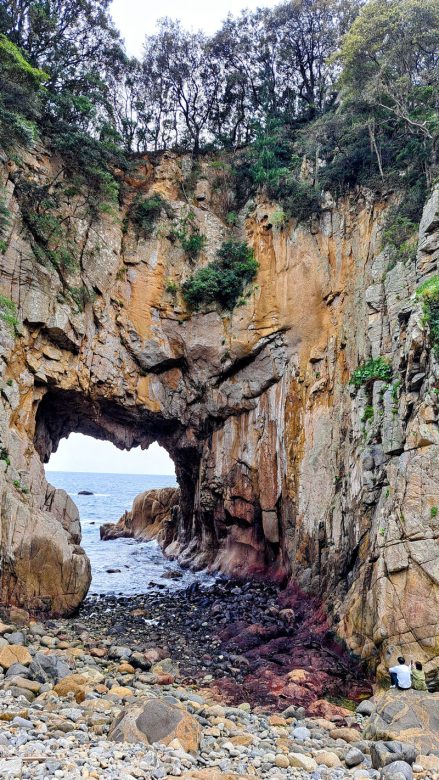
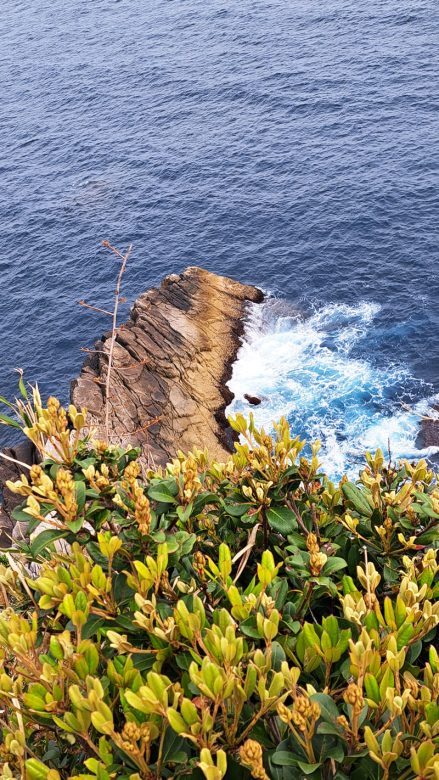

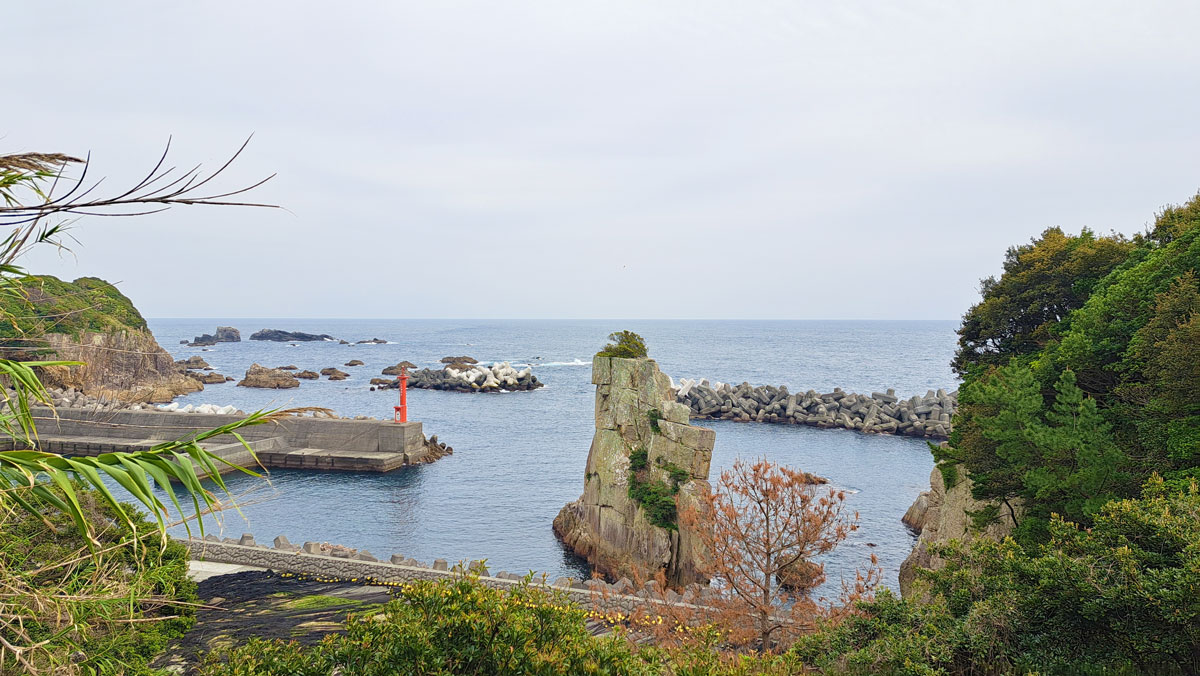
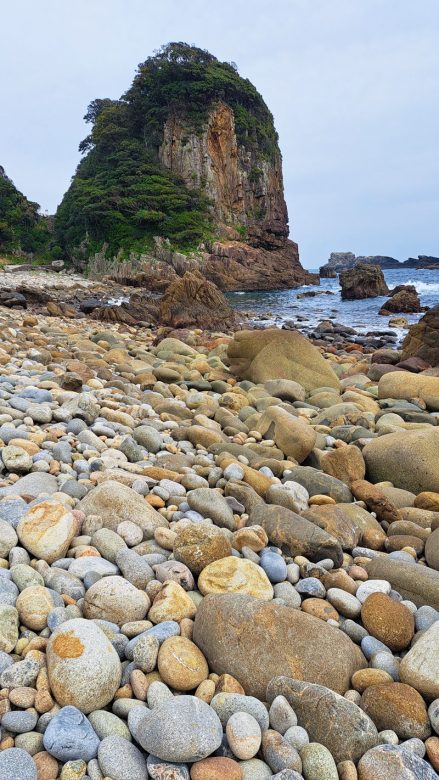

Food
Aside from some souvenir shops with limited snack options, there are no restaurants directly at the cape. It’s best to dine at your hotel or travel to Tosashimizu City, which is 20 kilometers from the cape.
Sleep
We stayed for 3 nights at The Mana Village. Read our separate post about The Mana Village hotel.
More Activities
Further along the coast, you can visit the Tatsukushi and Minokoshi coasts. The Tatsukushi Marine Park is a must-see, known for its unique rock formations and clear waters ideal for snorkeling and diving.
Although we didn’t have enough time to visit the Matsue Area, it boasts several highlights:
- Tojindaba Megaliths: Some believe these rocks are remnants of an ancient Stone Age civilization.
- Akoh “Strangler Fig” Habitat: This area features parasitic subtropical trees that envelop and kill other plants. A specific fig tree here is 25 meters high, 9 meters wide, and approximately 300 years old.
- Usubae Coast: Known for its striking granite cliffs.
Practical info
We last visited here on April 2nd 2024



